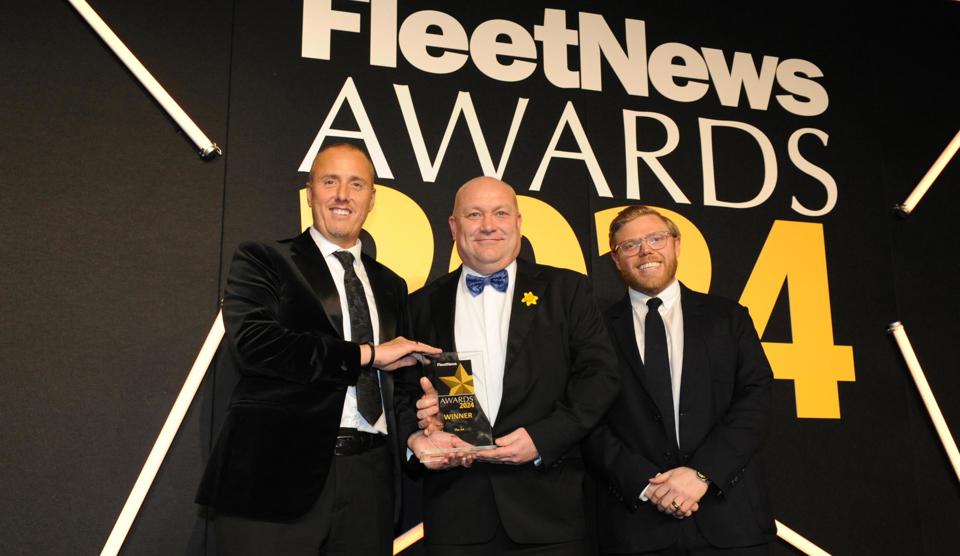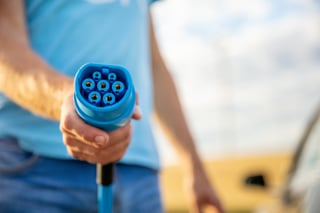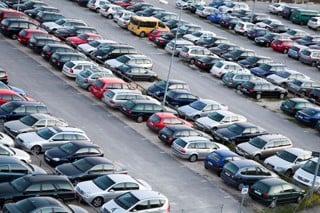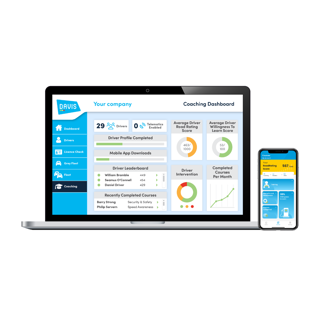One of the UK’s most experienced and knowledgeable fleet leaders, Duncan Webb has played a key role in the management of the country’s two biggest fleets – Royal Mail and BT – during his 25-career in fleet.
Now fleet director at the AA, where this year he collected the Fleet News Award for fleet of the year – more than 1,000 vehicles, Webb brings his distinct brand of fleet management – focusing on risk management, compliance and people – to one of the more eclectic operations, with 9,000 assets spanning driving school cars to breakdown recovery trucks and mobile repair vans.
High on the list of priorities, as it is with most major corporates, is sustainability, targeting net zero and decarbonisation. For the AA, it poses significant challenges, not least limited towing capabilities of electric vans for the breakdown and recovery fleet.
Legislation presents another barrier. The driving school is dominated by conventional petrol and diesel cars with their manual transmission; learn to drive in an automatic electric and you are legally only allowed to drive automatic cars.
The AA is lobbying Government for an overhaul of the archaic laws, although it sits someway down the list of ministers’ priorities.
The driving school accounts for the largest number of vehicles, around 3,300 cars, but it also consumes the least amount of time to administer.
Greater attention is demanded by the complexities of managing the 2,750 roadside assistance vans and the 240 recovery trucks. Webb is also responsible for 300 company cars – some of which are on salary sacrifice – and 2,500 vehicles in the mobility fleet, which provides drivers of cars from the AA’s manufacturer partners which can’t be fixed at the roadside access to a same-brand model to complete their onward journey.
A diverse fleet almost invariably results in an assortment of funding methods. Company cars, vans and trucks are on traditional contract hire, the driving school are finance leased and the mobility vehicles are also on finance lease but with manufacturer buyback.
It’s a similar story with operating cycles. Trucks and company cars are replaced after four years, mobility solution cars are typically within 18 months and driving school cars are de-fleeted after 25 months.
Vans to switch from four- to five-year cycles
Vans, meanwhile, are moving from four to five years after recent modelling under the AA’s total cost of ownership calculations showed this was the optimum cycle considering all factors. It will be implemented for new vans only, not the existing fleet, though.
“It's a challenge of dynamics,” Webb said. “When you look at the price of vans now, manufacturers have been curtailing the discounts and interest rates are high compared to recent long run averages.
“Risk in year four to five is acknowledged within our TCO model. We know we've got an incremental cost on maintenance, but the reality is when you put it in the TCO model it works for the first time to do it at five rather than four years.”
He added: “It's not all financial. We are the AA; we don't want to break down on the way to someone's breakdown. So we are not prepared to go past five as an operating principle.”
The new model will apply to all fuel types; it’s not been triggered by the need to make the figures work on electric vans.
Covid inadvertently gave the AA an opportunity to trial the longer replacement cycle when model shortages enforced contract extensions upon most fleets. The maintenance impact was measured at £1,500 per vehicle.
“So, it's a known rather than an unknown - we can plan for that,” Webb said.
He can also take preventative measures to minimise component failures which largely caused the spike in maintenance costs by proactively changing them ahead of the manufacturers’ recommended schedules.
The AA has been testing a vehicle health product across its fleet for the past nine months ahead of an expected B2B market launch in early 2025. Called Vixa, it’s an agnostic plug-in device which turns a reactive approach to faults into a proactive one through pre-identification.
“We have 3.2 to 3.5 million breakdown events a year, so the data source is massive,” Webb said.
The device identifies faults in two main modules: battery lifecycle and engine performance. More will follow, including tyre monitoring.
The battery module has got “a really high degree of accuracy”, Webb said. The engine module is a little “trickier”, not least because of the number of fault codes that are activated and then go away by themselves – a common issue with modern, highly connected cars.
“A lot of the vehicles self-heal or have over-the-air fixes so it's getting that level of accuracy into the algorithms.”
TCO modelling
Eighteen months into the AA role, Webb points to a number of achievements, but is quick to give much of the credit to his team.
Major successes include bringing the fleet back into line with a TCO economic life, which required an aggressive replacement strategy – essentially a year-long programme of replacing 30 vans every week and 10 trucks every month, both with multiple stage conversions.
Then there has been the wholesale reengineering of the supply chain after the collapse of former partner Rivus. The involved in-sourcing many elements, such as maintenance planning, using its own mobile technicians and the AA’s Prestige workshop network for servicing and repairs, and standardising tyre supply.
One of the biggest challenges to address concerned the trucks. The AA used the Rivus workshop network to park its vehicles overnight as well as for servicing. Now it had to find replacements and that meant changing some of the depot locations.
“We operate about 45 depots across the UK and most had to switch to new locations,” Webb explained. “Everybody will know just how time consuming and complicated that can be and all the rules and regs that you have to comply with.
“We wanted to keep that model because it's really effective for us. It's also an effective model for our suppliers. But it's not been able to be achieved in all locations.”
At the same time, he brought the first electric trucks onto the fleet, as part of an ESG strategy which includes a company-wide commitment to achieve net zero by 2035.
“The electric trucks challenge how we do recovery from a pure operational design perspective,” Webb said.
The problem is twofold.
“First, we work our trucks hard: we have a two-to-one driver-to-truck ratio, so a truck would normally stand still for only about five hours overnight because we double shift them. At end of day we want them out recovering customers.
“Problem statement number two is everything we do in recovery is reactive. Therefore, you're never quite sure where your truck's going that day: it could be on the motorway, it could be some residential area. You might have to drive 50 miles to your first job, you might have to drive five miles. It is planned in real time.
“That's not very well aligned to electric vehicle technology in the range and routing.
“But we had to ignore that and focus on the dense urban geographies. So we've deployed these into London and Birmingham.”
It was also a challenge for the AA’s bodybuilder partners who had never built these vehicles before in the UK.
“We are using it as a test and learn so that we can scale,” Webb added.
He has taken on four electric trucks, and they are being used in different ways, including recovery capacity for two cars, capacity for one car and a crew cab conversion.
There have been no limitations on daily mileage due to the density of work, but the main issue has been the implications of the driver ratio on charging times.
“We cannot recharge that electric truck in five hours,” Webb said. “And if you look at the growth of rapid chargers, they are not designed for trucks.”
Consequently, for now, he is unable to run the 2:1 driver ratio, reducing it down to 1.5:1.
HVO cuts CO2 by 90%-plus
The AA is supplementing the electric trucks by increasing its use of HVO which it has been testing for the past nine months.
“It works. I wish it was available more widely in the UK,” Duncan said. “But we will expand HVO significantly in 2025, because in the very short term, that's the best thing we can do as a company. I can cut 90%-plus CO2 out instantly.”
He would like to see forecourts install HVO pumps, calculating that one in 220 – 400 pumps in total – would be enough “not just for the AA, but for any company to embrace that sort of strategy”.
In complete contrast to the trucks, electrifying the company car fleet has been a breeze, with 45% full EV and 52% PHEV. The remainer are due for imminent replacement.
The roadside van fleet is also problematic, with just 3% having transitioned to full electric, about as much as reasonably can at the moment.
“We want to get to people quickly. We want to get them on their way permanently,” Webb said. “To do that, our vans are kitted to a high standard, which means they're pretty much up to their weight capacity.
“For EV drivetrains, we have to compromise on weight and therefore we will have to compromise on customer outcomes to be successful. We tow people as well and there still isn't a van on the market that ticks all those needs.”
Webb believes that hybrid will provide the interim solution for the van fleet over the next couple of years.
Sustainable mobility options
Delivering a sustainable strategy is not as straightforward for the AA as it is for final mile distribution companies, where alternatives such as e-cargo bikes, drones and robots can be viable solutions.
Nevertheless, the AA is considering how it can evolve its operations to create an opportunity for new solutions.
“There's a few things we're doing. The most sustainable is remote fix where, through a triage process of an incident, we fix it remotely,” Webb said. “We do about 120,000 a year.”
This includes a combination of an operator speaking the customer through the fix or an over-the-air diagnostics resolution.
As example is a vehicle that has gone into limp mode. The issue could be identified remotely, and the driver could reset the system.
“So our biggest bit towards sustainable mobility is not sending someone in the first place,” Webb added.
He is also trialling a tricycle in London to assess the extent of its capabilities.
“It's more limited in what it can physically achieve. So it only gets dispatched to the jobs where we think it is going to be successful,” Webb said.
“Again, it’s a test and learn to see if there is enough density of jobs to do the work that the trike is capable of.”
Supply chain management
The huge change to the AA’s supplier relationships caused by exiting Rivus fundamentally changed the way the fleet operates. The organisation backed Webb’s vision by investing in his team to ensure they had the skills to take on new fleet management requirements.
It has resulted, Webb believes, in a “more sustainable outcomes model and financial model”.
But he still uses external suppliers, grouping them into strategy and commodity.
“We then manage relative to what category we put someone in,” he said.
“A lot of fleet suppliers end up in the critical and strategic supply boxes, which is day-to-day performance management, monthly business reviews, quarterly engagement sessions and once a year strategic, director-level sessions.”
One of Webb’s priorities over the next couple of years is the further development of his team.
“I want them to be leaders in fleet. I want them to be given opportunities, not just in the AA. I'm a big fan of the AFP and getting people qualified,” he said.
“The AA is a massive automotive company that can offer opportunities to these individuals. Whilst I'd like to keep them, I'm also really relaxed on them going off and doing bigger and better things with other companies as well. In some way we're giving the education to some of the fleet managers of the future through the team.”
Continuous learning and expansion of knowledge and skills is vital for the modern fleet leader, with the role evolving rapidly away from its traditional roots in vehicle management.
Among the skills now required to be a successful fleet decision-maker are stakeholder management, process management, and system tech abilities.
Then there are the changes in vehicle technology which mean it is no longer sufficient to simply give someone a vehicle and expect it to work for them.
“You can't just give them an electric truck and it works. It's not how the fleet operates, it's how the business operates. You need process skills,” Webb explained.
“Being good at finance is just a given as is knowing the hygiene parts of a fleet job. A fleet manager is actually a leadership-stroke-change management role.”























Login to comment
Comments
No comments have been made yet.